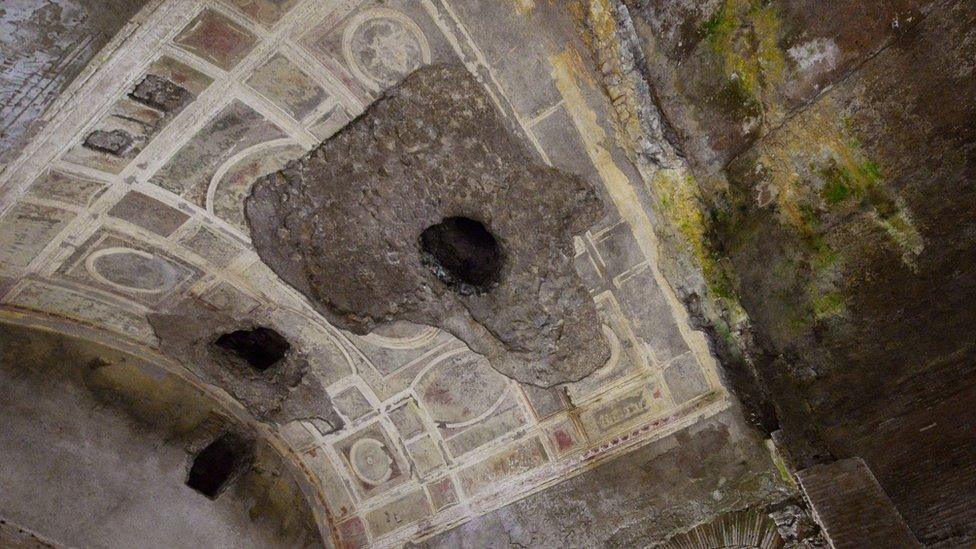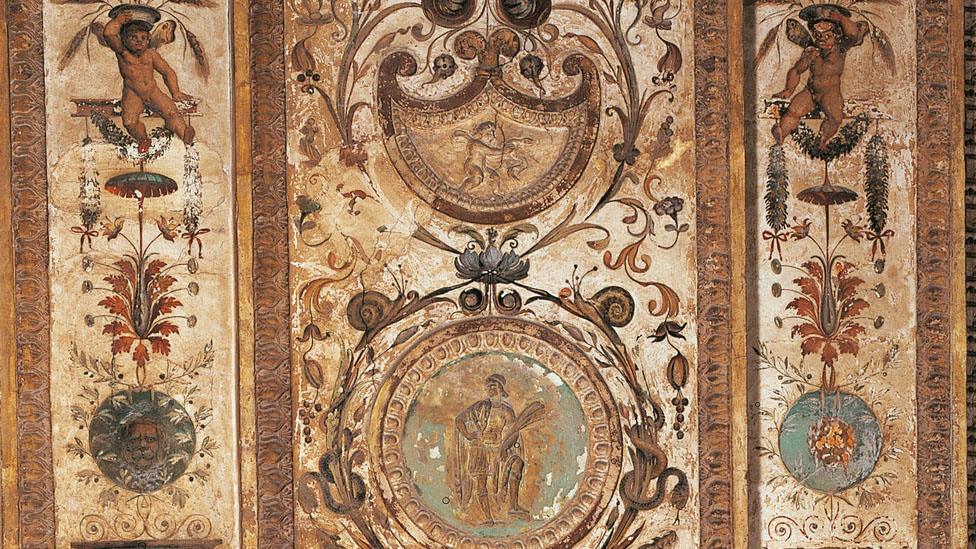The Vocabularist: Grotesque wasn't always an insult
- Published

Many artists and others were lowered in to see the decorations in the "grottoes"
In recent days an opponent of Hillary Clinton was accused of "grotesque misogyny" while the lack of broadband in rural areas was branded a "grotesque problem". But the word didn't always mean something bad, writes Trevor Timpson.
Grotesque is one of those words which people making public statements reach for when ordinary insults just will not do. But it was not always an insult.
Its history started in about 1500 in Rome - with an event that affected aesthetics as deeply as the discovery of Tutankhamun's tomb.
The enormous chambers of Nero's unfinished palace, the Golden House, had lain buried and forgotten, until someone reportedly fell into them through a broken ceiling.
Many people, including famous artists, were lowered in, to wonder at the painted decorations on the walls.
Because they went in from above, the chambers were dubbed "grotte" - Italian for caves or cellars, derived from the Latin cripta, which is the Greek krypta, meaning hidden place.
The decorations were much admired, and patrons began to commission "grottesco" imitations - notably the Vatican loggias by Giovanni da Udine, whose name is scratched among the Golden House frescoes.
Amid elaborate scrolls, arabesques and swags of flowers, the decorations in the Golden House included strange and half-human figures and mythical animals.

The Vatican loggia decoration by Giovanni da Udine was among the initial "grottesco" commissions
But they had a certain delicacy and order; it took time for the word to acquire the connotations of tangled grossness which we associate with it today.
Nevertheless, by 1667 Milton was writing in Paradise Lost of greenery "grotesque and wild" obstructing Satan's entry into Eden. And 18th Century London entertainments regularly advertised knockabout "added scenes, in grotesque characters".
Across Europe the meaning became rolled up with other trends in art. These included the Mannerists, most famously Giuseppe Arcimboldo, with his portraits built up from pictures of fruit, and the gargoyles and weird manuscript decorations of the Middle Ages.
By the early 20th Century the word "grotesque" could break away from aesthetics on occasion, and be used to decry an opponent's arguments. In 1913 a letter in the Sunday Times called the comparison of historic heroes with champions of women's suffrage "grotesque".
In 1985 Labour's Neil Kinnock famously used "grotesque chaos" in his attack on the Militant Tendency.
He may well have coined the phrase afresh, though it had been used before. It appeared in a book review in the Sunday Times in 1964. And "chaos" comes from a Greek word meaning "gaping void".

Neil Kinnock in 1985: He was not the first person to use the phrase "grotesque chaos"

The Vocabularist
Select topic "language" to follow the Vocabularist on the BBC News app

Subscribe to the BBC News Magazine's email newsletter, external to get articles sent to your inbox.